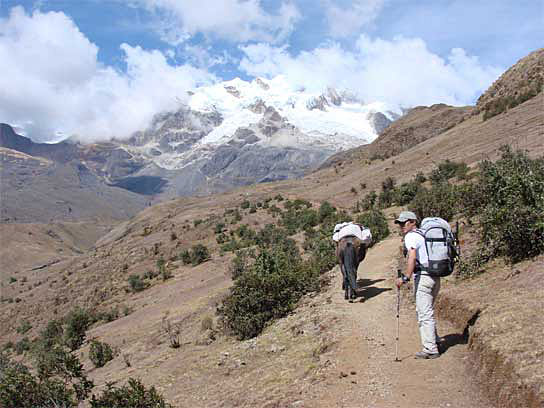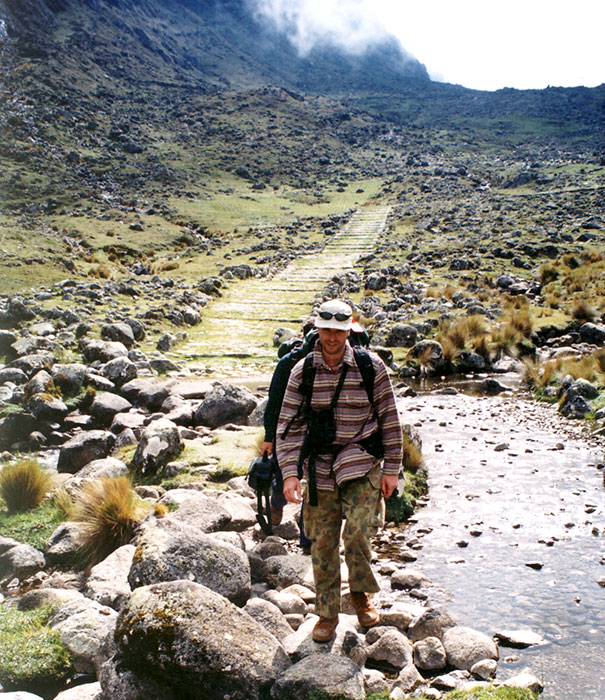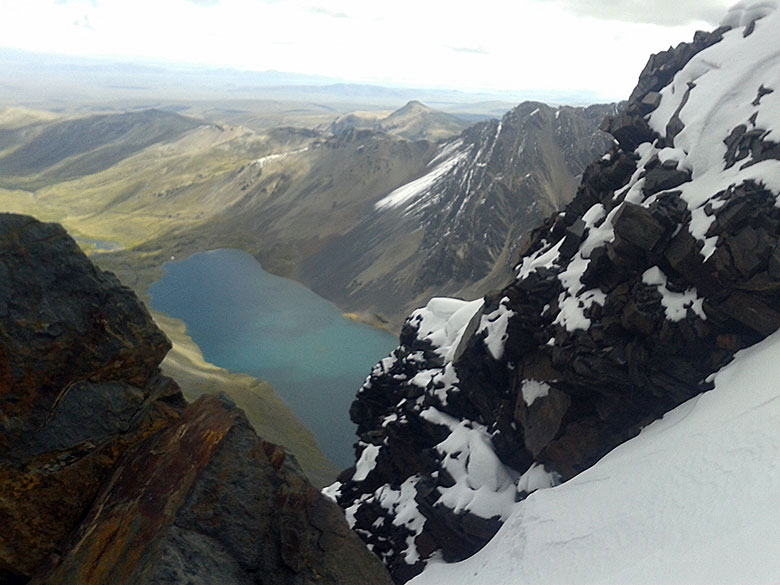Our company
FAQs
Bolivia FAQs:
Find the answers to some of the most common frequently asked questions about Bolivia in our offer. Contact us with any other questions and we will be happy to assist you as part of our custom-made travel planning services.
When is the best time to travel to Bolivia?
Bolivia is a year-round destination. With varied climates, the weather in Bolivia varies significantly from region to region at any given time of year and the best time to travel will depend in part on which regions of the country you plan to visit. In the Andes and higher altitude regions like the salt flats of Uyuni – Bolivia’s main tourist destination – there is a dry and rainy season, as opposed to four seasons. The dry season is from April – November. There are lower temperatures in the dry season than rainy season, when the Salar can get very cold. The wider temperature fluctuations occur more dramatically between daytime and night time. In the dry season, the Salar forms vast expanses of pentagons of crystalline salt which creates an enormous, surreal white landscape. The rainy season is from December – March, when a thin layer of water builds up on the Salar de Uyuni allowing it to take on a mirror-like reflective quality. It is not possible to cross into the middle of the Salar by 4×4 in the rainy season, so routes are adapted to photograph the Salar and its reflective qualities.
When is the best time to visit the Bolivian Mountains?
The dry season is best time to travel (from May to October) due to the better road conditions, generally sunny skies and warm temperatures during the day but cold during the night.
Travel to most regions of Bolivia is certainly possible year round, but you have to have in mind that during the rainy season (December to March) normally some dirt roads become flooded and it could take some time until tractors clear them.
Should altitude be a concern?
The lower atmospheric pressure and low oxygen levels in the air affect our body in different ways when we are at high altitudes.
Most people can start to feel the effects of altitude at over 2000 m (6561 ft) regardless of age, gender or fitness level. While our leaders have basic first aid training and are aware of the closest medical facilities, it is very important that you make yourself aware of the cause and effects of travelling at altitude, monitor your health and seek assistance accordingly. It’s important to take it easy, drink plenty of water and speak to your group leader at once if you feel unwell.
We recommend seeing your doctor if you have any health concerns before undertaking the trip. Particularly if you have a pre-existing medical condition or take any medication.
We suggest spending 5 to 7 days acclimatizing. If you are planning to undertake a climbing expedition program, this can be done through multiple activities such as slowly paced walks in the city and altitude variable hikes.
Do I need any vaccinations before visiting Bolivia?
Bolivia requires proof of yellow fever vaccination if you are travelling from a country with risk of yellow fever. Many South and Central America countries pose a risk (including Argentina, Brazil and Colombia), so if you are planning on visiting other nearby nations, you may be required to get this vaccine. Please note that your home country may also require proof of yellow fever vaccination on return from Bolivia. Consult your nearest embassy for more information.
Visit your doctor or travel clinic for up-to-date advice and make sure to schedule your vaccination 4-6 weeks before your departure date, as some may require time to become effective. No other vaccines are required in order to enter Bolivia but some are recommended for protection against disease.
Do I need Visa to visit Bolivia?
Visas are the responsibility of the individual traveler. Entry requirements can change at any time, so it's important that you check for the latest information. Please visit the relevant consular website of the country or countries you’re visiting for detailed and up-to-date visa information specific to your nationality.
Do I need travel insurance?
We strongly recommend you do have insurance before the start of your trip to cover you for flight cancellations, theft, lost luggage and general cancellation by you in the event that you are unable to carry out your trip due to illness or unforeseen circumstances. It should also cover you for potential medical expenses incurred during travel in case of illness or accident.
How safe is Bolivia?
Like all countries in the world, there are parts that are really safe and parts that are dangerous. It is about being aware of where you are and not taking your safety for granted. Some people see tourists as easy targets for money, laptops, cameras etc., so always be aware of pickpockets and stay vigilant and listening to the advice of our guides.
For example, never use an ATM at night if possible; never walk alone at night, it’s better to walk in group at night. Basic things like this can sometimes be forgotten and these are the moments you might be targeted.
How do I get to Bolivia?
At present, the only direct services to the country depart from Miami in the US, Madrid in Spain and from neighboring South American countries – the most frequent connections are from São Paulo in Brazil, Buenos Aires in Argentina and Lima in Peru. In Bolivia itself the main international airports are in Santa Cruz and in the political capital La Paz.
Airfares: Prices depend on the season: high season runs from July to August and during Christmas and Easter; fares drop during the shoulder seasons (May–June & Sept–Oct) and even more during low season (Jan–April & Nov to late Dec).
Alternatively, it is common to travel to Bolivia overland when combining a visit to Bolivia with a neighboring country. The most widely used route is to travel to (or from) Bolivia by road from Lake Titicaca in Peru via the Kasani border. This can be done in a day. It is also possible to travel by boat across Lake Titicaca. In addition, there are land border crossings with Bolivia's four other neighboring countries: Argentina, Brazil, Chile and Paraguay. It is also popular to combine a 4x4 tour of Uyuni salt flats and Bolivia's Eduardo Abaroa Reserve with Chile, starting or ending in San Pedro de Atacama, one of Chile's top travel destinations. Pukina Travel arranges overland options as part of any custom-made trip to Bolivia.
Do you arrange international airfare?
We can arrange domestic flights within the different airports in Bolivia; we specialize in ground arrangements (drivers, transfers, trains, boats etc. in our region) as opposed to flights, so are unable to offer international flights to or from your departure country.
Do the guides speak English?
All of our trekking and mountain guides have some intermediate level of English necessary to the execution of our programs. For the offer that we have besides the mountain climbing, all our guides have a good command of English.
Guided tours in other languages except for high mountain climbing, it is possible to organize them upon request.
Do you arrange group or join-in tours?
At Pukina Travel we only arrange private tours. We do not offer group tours on a join-in basis with a set departure date. We occasionally offer one-off special departure group trips which we will announce on our website. If you've already formed your own group then we would be delighted to assist.
Will my mobile phone work in Bolivia?
Phone and internet coverage is highly variable depending on where you are in Bolivia. In and around Uyuni there is no internet coverage at all, only phone coverage. The Salt Hotels provide free Wi-Fi within their properties, though the connection can sometimes be slow and unstable. In major cities like La Paz and Sucre there is good phone and internet coverage. Pukina Travel can provide you with a local SIM card and pre-paid data plan during your travels to Bolivia.
Communication and Security, how does it works in trekking or climbing expedition?
Our local guides do always have cell phones that work ok in most of the areas we travel (sometimes our guide would require to climb to a higher elevation when in deep valleys for instance).
FM or UHF walkie talkies for communication between guides and drivers are always sent on our trips.
For the moment we do not have Satellite phones.
We always advice our clients that there is no proper rescue system in Bolivia, no helicopters can be called in case of an emergency.
If required, professional UIAGM/IFMGA guides highly trained in rescue techniques can be called for a rescue in the mountains. Anyways all groups have to be self-sufficient, and able to organize their own rescue or evacuation if needed. All expensed as a result of a rescue or evacuation should be paid by the client himself through his/her insurance coverage.
Our guides will have a small first aid kit including the basic drugs (painkillers, generic antibiotics, and peptic stuff for stomach upsets) and medical material to cure minor wounds. Our guides do not carry, prescribe or administrate drugs which need medical prescription.
What currency should I bring?
The currency used in Bolivia is the Boliviano. It is possible to exchange dollars and euros to Bolivians in banks, hotels, and exchange houses and in shops (in small cities). Smaller stores tend to have the worst exchange rate, especially in tourist areas where crafts are sold. We recommend exchanging money at banks, hotels or with official money changers. $ 100 bills can be difficult to exchange, especially in smaller cities. Please note that stained or broken dollar or euro may not be accepted; always carry banknotes in good condition. There are ATMs throughout the major tourist cities. Visa and MasterCard are accepted. Please note, however, that MasterCard is not accepted in some locations.
How much am I meant to tip?
Tipping is not mandatory in Bolivia and completely discretionary.
However, as a tourist, a little generosity with ‘propinas’ will go a long way, especially if you’re truly happy with the service you received.
During your holiday, you will come into contact with many people that survive on lower wages, from hotel porters to taxi drivers.
Keep hold of any small notes / loose change to give as tips because most people won’t have change.
Exchange rate USD 1 = Bolivianos 6.96
Tipping guide:
Airport porters:
5 Bolivianos per bag. This is not a tip, but payment – these people make their living by carrying your luggage.
Drivers:
No tip expected unless you hire them for a full day then +10% to the fare.
If you have a driver for several days and good service was provided (drove safely, friendly etc.) then a pooled pot between all travellers of 35-70 (USD 5-10) Bolivianos per day is sufficient.
Restaurants and bars:
As with most places in the world it is normal to tip in restaurants if the service was reasonable and the food good. A tip of 7-10% would be adequate.
Tipping is not expected in bars, but you may opt to leave small change.
Hotel staff:
A friendly and helpful porter who carries your bag to your room is typically given 4-8 Bolivianos.
Breakfast waiting staffs, again, leave 4-8 Bolivianos on the table per person, per breakfast, and the same amount for cleaning staff – in many hotels this is not expected but the staff will be grateful.
Guides:
Most guides have spent a number of years studying at Colleges or Universities to qualify as guides. Their depth of knowledge of their area or specialist skill, command of English and friendliness should help determine the tip.
As a general guideline it would be expected to tip each specialist guide 70–140 Bolivianos (US$10-20) per day.
On treks:
A good guide who does the job well, good English and service can expect 70–140 Bolivianos (US$10-20) a day in total.
For a good cook and/or an assistant guide, then they each get about half that of the guide per day, 35-70 Bolivianos (US$5-10).
Mule drivers’ tips are generally around 28-35 Bolivianos per day (US$ 4-5).
Summary
It is a general guide & the only rule with tipping is that it is voluntary.
Airport porters: 5-8 Bolivianos per bag – compulsory
Hotel staff: 5-8 Bolivianos per bag / per breakfast/ per night for cleaning staff
Transfer drivers/taxis: Generally not expected.
Drivers: 35-70 Bolivianos per day total from the group
Specialist guides: 70-140 Bolivianos per day total from the group
Trek assistants/cooks: 35 – 70 Bolivianos per day total from the group
Restaurants: +10% to the bill




